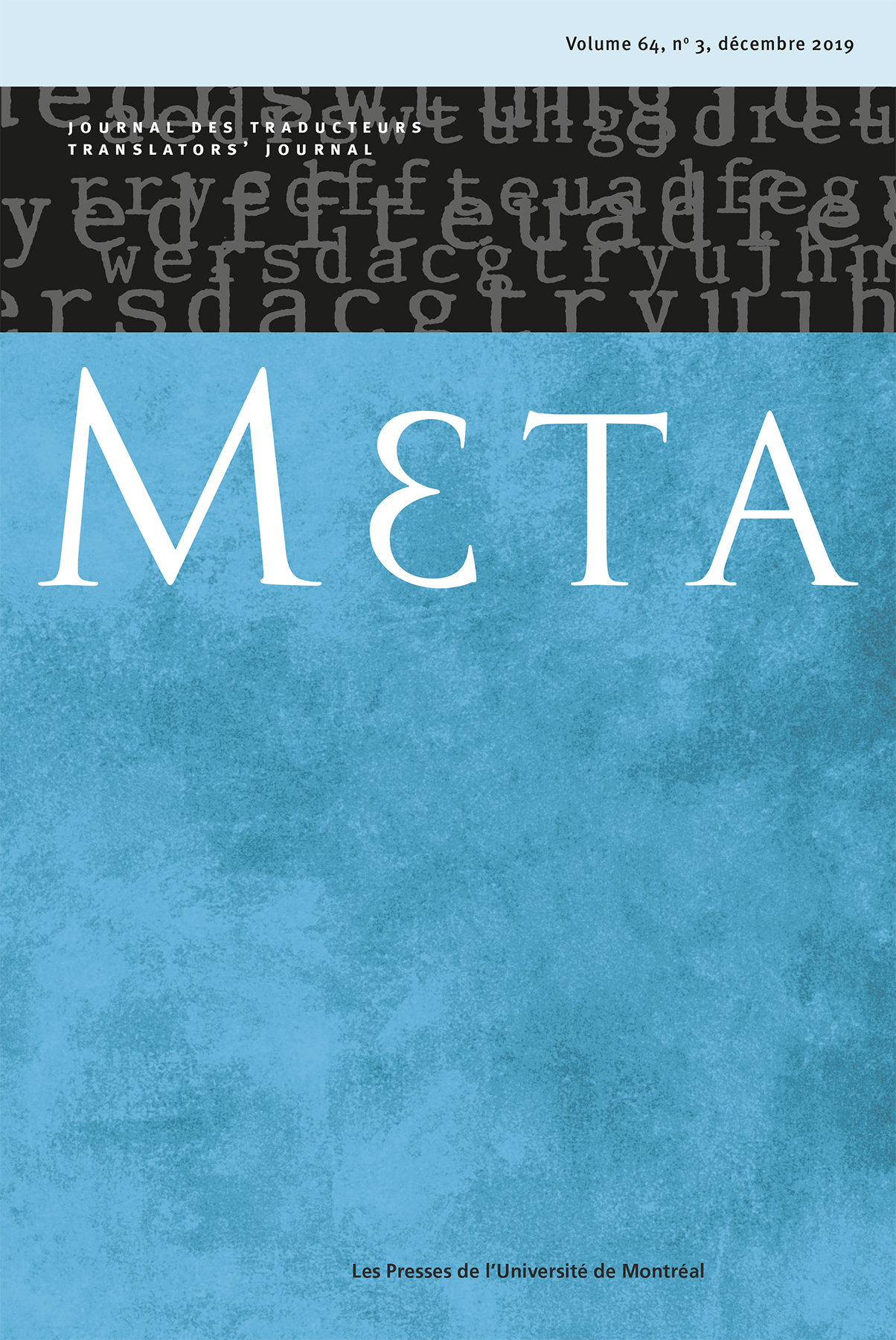This volume is monumental in providing a comprehensive account of the history of modern translation knowledge through seven processes that make up its history: generating, mapping, internationalising, historicising, analysing, disseminating, and applying knowledge. This seven-part book is preceded by an introduction and followed by bionotes, a name index, and a subject index. It is of note that the word history in the book title is defined as “one of dialogue rather than opposition between past and present” (p. 4). The term translation knowledge was coined by D’hulst and Gambier in analogy with other fields of knowledge; it refers to knowledge about, on, and of translation (p. 7). In the general introduction, D’hulst and Gambier stress that this book aims to delineate the history of modern translation knowledge. In other words, this book concentrates on knowledge about, on, and of translation rather than how knowledge circulates through translation. The authors present the book’s three main recurring themes, namely bridging past and present translation knowledge, laying the foundations of an interdisciplinary history of translation knowledge, and circulating translation knowledge across languages and cultural borders (p. 10-11). The first part contains ten contributions focusing on generating knowledge. It brings together ways of generating knowledge in the past, with the concepts of translation, tropes, myths and fiction, semiotics and rhetoric. In Chapter 1.1, entitled “Concepts of Translation,” Gambier discusses a range of translation concepts from around the world, which briefly summarises the variety of terms in different discourses and thoughts on translation in certain cultures or societies. He identifies a semantic cluster of three notions (similarity, difference, and mediation) for translation in different languages, with a view to being alert to the cultural and historical variation of usage and interpretation when referring to translation (p. 32). In Chapter 1.2, entitled “Tropes,” James St. André explores figurative language in translation studies, including metaphors of translation, translation as metonym, innovative thinking, and conceptual metaphors, with a view to highlighting the important role of figurative language. In Chapter 1.3, entitled “Biblical Myths,” Claire Placial focuses on two biblical myths (Babel and the Pentecost), with the aim of exploring how the myth of Babel is perceived in translation theories and the evolution of the myth of Babel in the context of globalization. In Chapter 1.4, entitled “Fictional Representations,” Klaus Kaindl identifies novels, stories, plays and films, (auto) biographies of translators, documentaries, YouTube clips, photographs and paintings as his objects of investigation. He states that fictional representations are not only a multidisciplinary field of research, but also an occasional subject of investigation in TS. In Chapter 1.5, entitled “The Sacred and Taboo,” Douglas Robinson looks at bans on translating sacred texts in the world’s three major religions: Judaism, Christianity, and Islam, and at how translatable the Christian Bible is on a theoretical level. In Chapter 1.6, entitled “The Modern Regime of Translation and its Politics,” Naoki Sakai discusses the political and ethical significance of translation in light of the fact that translation is always complementary to the establishment, transformation, disruption or destruction of power relationships. Sakai also explores how the representation of translation has a socio-political impact. In Chapter 1.7, entitled “Translation and Adjacent Concepts,” Rita Bueno Maia, Hanna Pięta and Alexandra Assis Rosa explore such concepts as auto-translation, indirect translation, non-translation, pseudo-translation, and retranslation, all of which have in common with the questioning of binarism in the study and discourse of translation (p. 81). In Chapter 1.8, entitled “Expansions,” John Ødemark and Eivind Engebretsen investigate some salient features of the current expansion of translation beyond the linguistic, such as the cross-disciplinary uses of translation, medical knowledge translation, and …
D’hulst, Lieven and Gambier, Yves, eds. (2018): A History of Modern Translation Knowledge. Amsterdam/Philadelphia: John Benjamins, 487 p.[Record]
…more information
Lijuan Du
Shanghai International Studies University, Shanghai, China
Fuyang Normal University, Fuyang, China
This work was supported by Department of Education of Anhui Province (A Corpus-based CDA Study of the Chinese Political Discourse Translation, SK2019A0816), Department of Education of Anhui Province (2019jyxm0903) and Fuyang Normal University Project (2018FXJY01).

